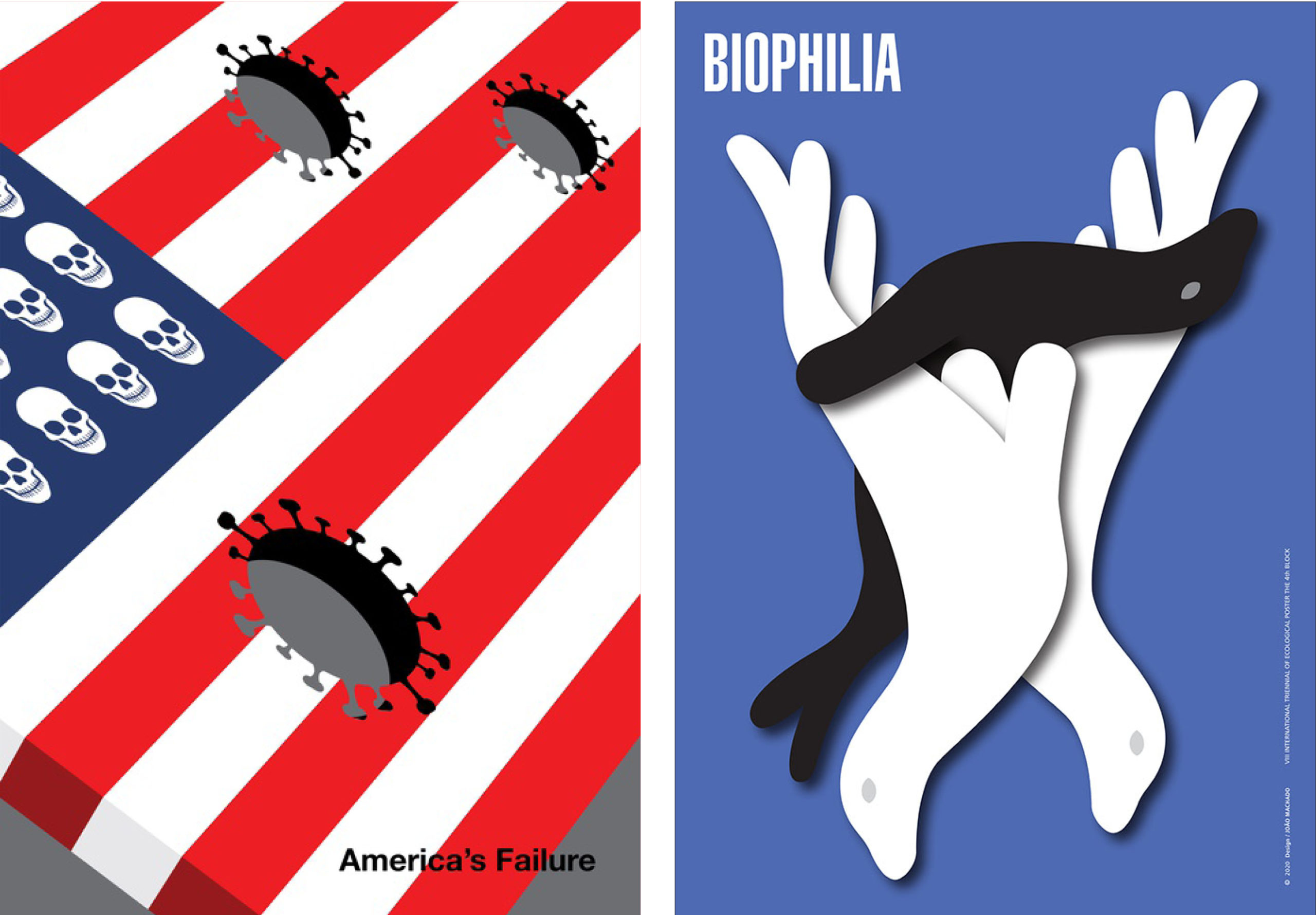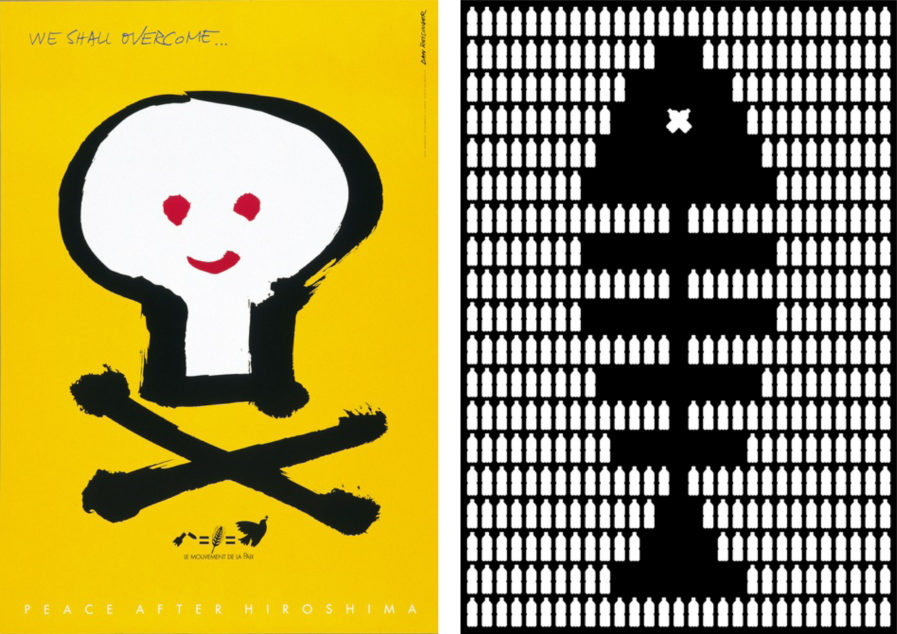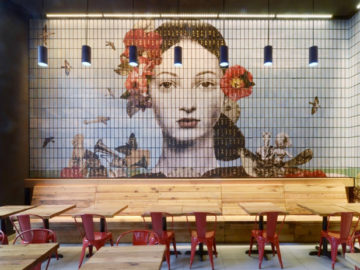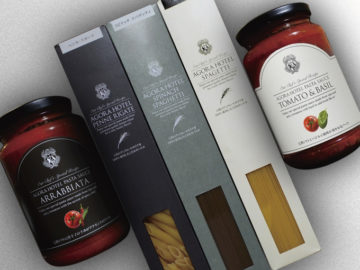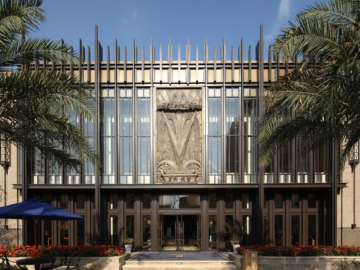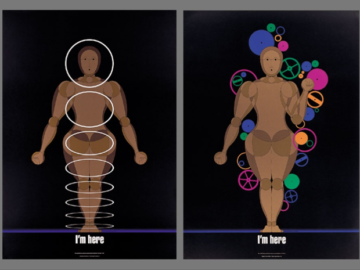A poster by Graphis Master Dan Reisinger submitted to the Protest Posters 2 competition celebrates peace after Hiroshima. The poster, titled “Peace after Hiroshima,” (above, left) has a bright, yellow background with what looks to be a skull and crossbones over the top of it. The skull is depicted as a light bulb, with a simplistic, smiling red face on it. The color scheme and the symbolism of the skull drawn to look like a happy light bulb could be interpreted as prioritizing rebuilding, happiness, and peace.
In contrast, Eduardo Davit submitted his protest poster depicting water bottles being made out into the shape of a fish. The grid of water bottles was originally complete; in erasing those that were obsolete, Davit was able to create the outline of the fish for his piece. His poster, titled, “White Pollution,”(above, right) is meant to remind us of the dangers that plastic and other pollutants have on marine life. Specifically, Davit wanted us to be reminded of the fact that plastic can and will kill the animals and degrade the quality of the ecosystem that they call home.
